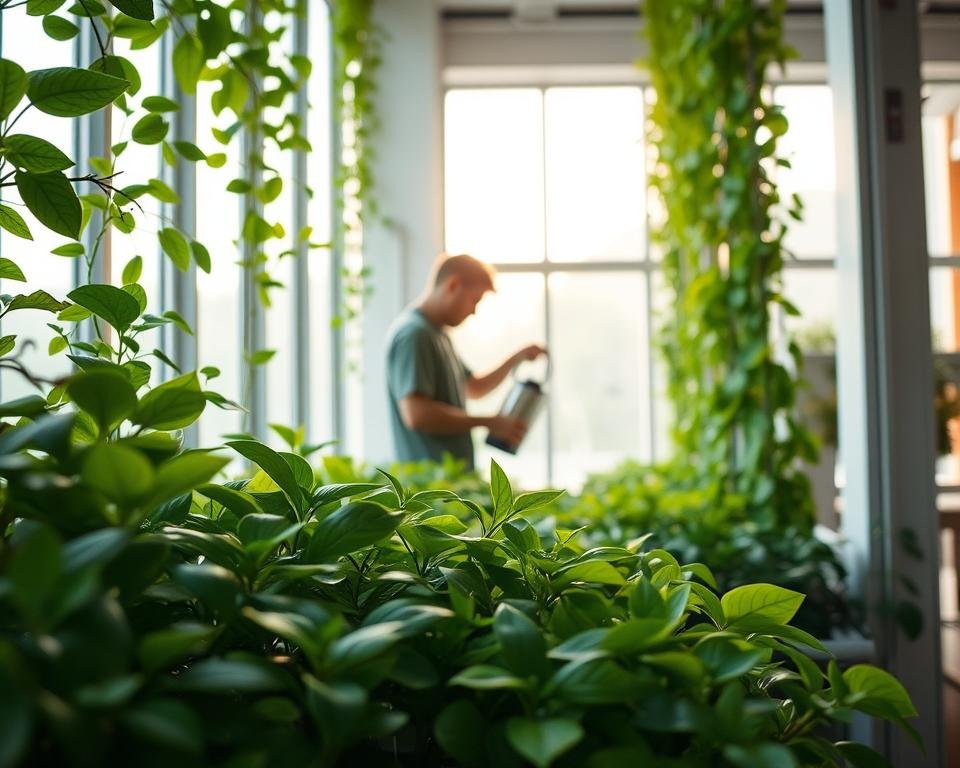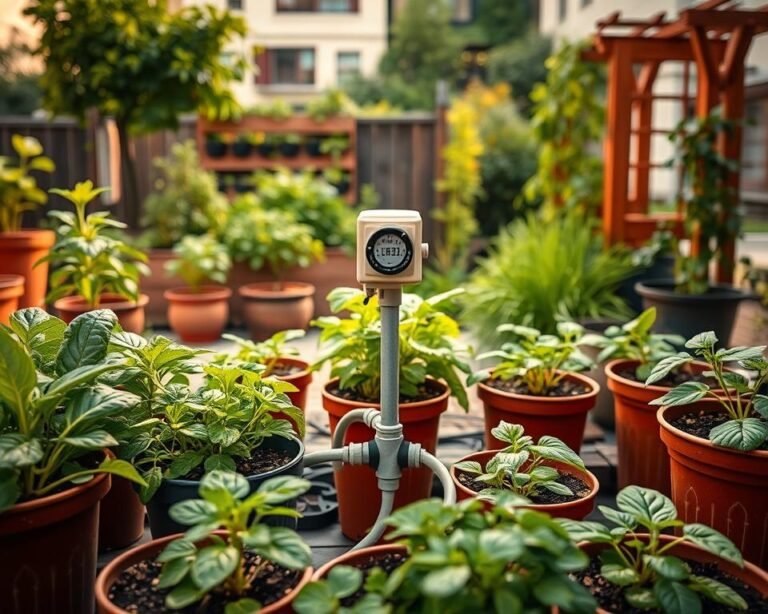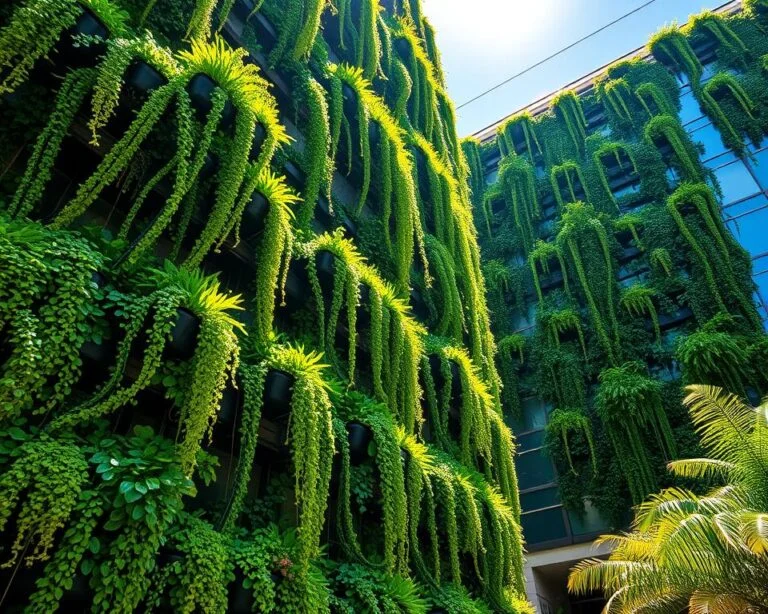Maintenance Scheduling for Healthy Vertical Gardens
A lush vertical garden is built on consistent maintenance scheduling, not just creative planting. Living in a city apartment with limited outdoor space, I discovered that regular care—planned down to the week—keeps a living wall vibrant and resilient.
Your vertical garden is more than decoration; it’s a dynamic ecosystem that depends on daily attention. From compact succulents to trailing vines, every plant thrives when maintenance scheduling covers watering, feeding, pruning, and light checks.
Urban gardeners face unique constraints, where every square centimetre counts. By following a clear maintenance scheduling routine—adjusted for space, season, and plant type—you’ll cultivate a strong, beautiful green space that transforms your home all year long.
Key Takeaways
- Regular maintenance is crucial for vertical garden success
- Select plants with shallow root systems for optimal growth
- Use high-quality, well-drained potting soil
- Implement consistent watering and fertilization strategies
- Monitor plants regularly for pest prevention
- Rotate plants to ensure even sunlight exposure
- Prune consistently to promote healthy plant development
Understanding the Importance of Vertical Garden Care
Vertical gardening turns small spaces into green oases. Success depends on careful maintenance for reliable equipment and healthy plants. Good vertical garden care makes gardening better.
Benefits of Regular Garden Maintenance
Regular upkeep brings many benefits to your vertical garden. It helps plants grow faster, keeps pests away, and improves air quality. It also makes your garden last longer.
- Increase plant growth rates by up to 30%
- Reduce pest infestations by 40%
- Improve air quality by removing up to 87% of volatile organic compounds
- Extend garden lifespan by 50%
Impact on Plant Health and Growth
Vertical gardening is more than just watering. Careful monitoring spots problems early. Plants like lettuce and herbs grow better with the right care.
Cost-Effective Prevention vs. Reactive Care
Preventive maintenance saves money in the long run. Vertical gardens cost $50 to $150 per square foot. Regular care cuts down on repair costs and keeps your garden healthy.
Vertical gardens are not just about plants—they’re about creating sustainable, efficient green spaces that enhance both indoor and outdoor environments.
Essential Tools and Equipment for Garden Maintenance
Keeping a vertical garden in top shape needs a smart plan for work order management and upkeep. The right tools are key to a smooth garden care routine. Professional gardeners know that the right gear makes maintenance easier and faster.

- Pruning shears for precise plant trimming
- Specialized watering systems with adjustable spray patterns
- Ergonomic hand trowels for planting and soil management
- Lightweight spray bottles for targeted fertilization
- Microfiber cleaning cloths for leaf maintenance
Understanding your garden’s needs is the first step to better maintenance. Different vertical garden designs need different tools. Choose durable, high-quality tools for precise care of your plants.
Studies show that 70% of gardeners say the right tools make tasks easier. By picking the right equipment, you’ll save time and keep your plants healthy.
The right tools are not an expense, but an investment in your garden’s future.
Think about making a maintenance kit with:
- Pruning tools
- Watering equipment
- Cleaning supplies
- Protective gear
- Measurement and tracking tools
With a solid tool strategy, garden maintenance becomes a breeze. It turns into a fun and efficient activity.
Maintenance Scheduling for Vertical Gardens
Creating a good maintenance plan is key for your vertical garden’s success. Planned care keeps your green wall healthy and vibrant all year. Knowing what care is needed at different times helps manage your garden well.
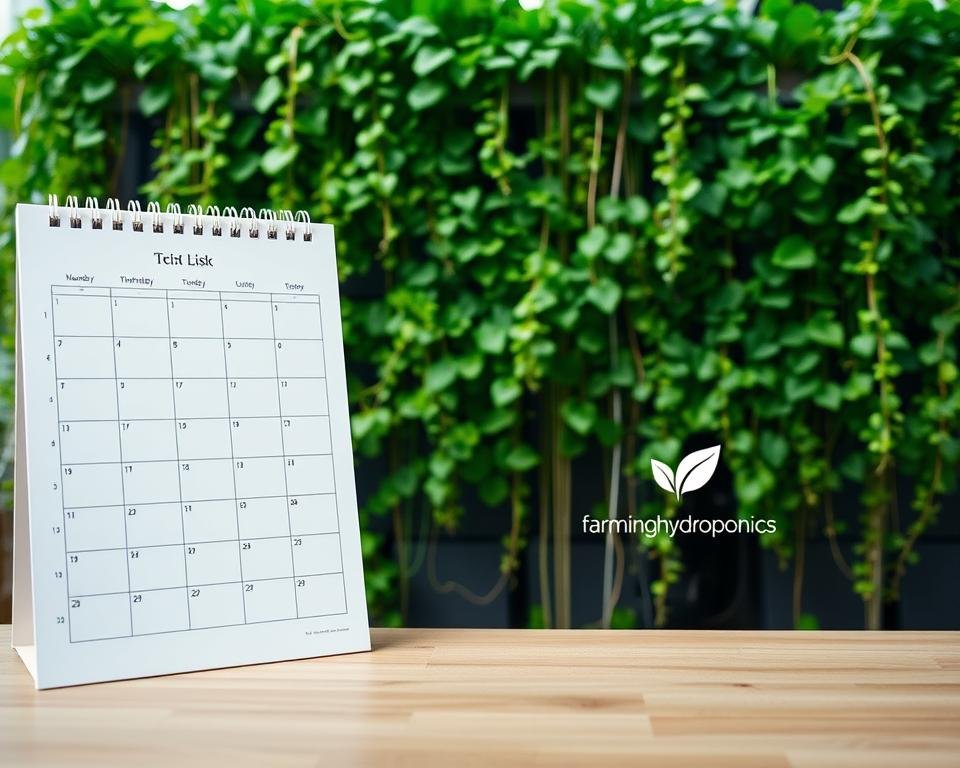
Your vertical garden needs regular care and smart strategies. Here are important tasks to do at different times.
Daily Monitoring Tasks
- Check soil moisture levels
- Inspect plants for early signs of pest damage
- Evaluate overall plant health
- Verify irrigation system functionality
Weekly Care Routines
- Prune dead or yellowing leaves
- Remove any visible weeds
- Clean plant surfaces
- Adjust plant positioning for optimal light exposure
Monthly Maintenance Checklist
| Task | Purpose |
|---|---|
| Soil nutrient assessment | Ensure optimal plant nutrition |
| Structural component inspection | Verify wall integrity and stability |
| Fertilizer application | Support healthy plant growth |
| Pest management review | Prevent potential infestations |
Seasonal Care Requirements
Vertical gardens need care that changes with the seasons. Cool-season plants do best in 50°F to 70°F, while warm-season plants like 70°F to 85°F. Change your watering and care to help plants grow well.
Using these maintenance tips, you’ll build a strong system for your vertical garden’s success. Regular care keeps your garden looking good and working well.
Preventive Care and Problem Detection
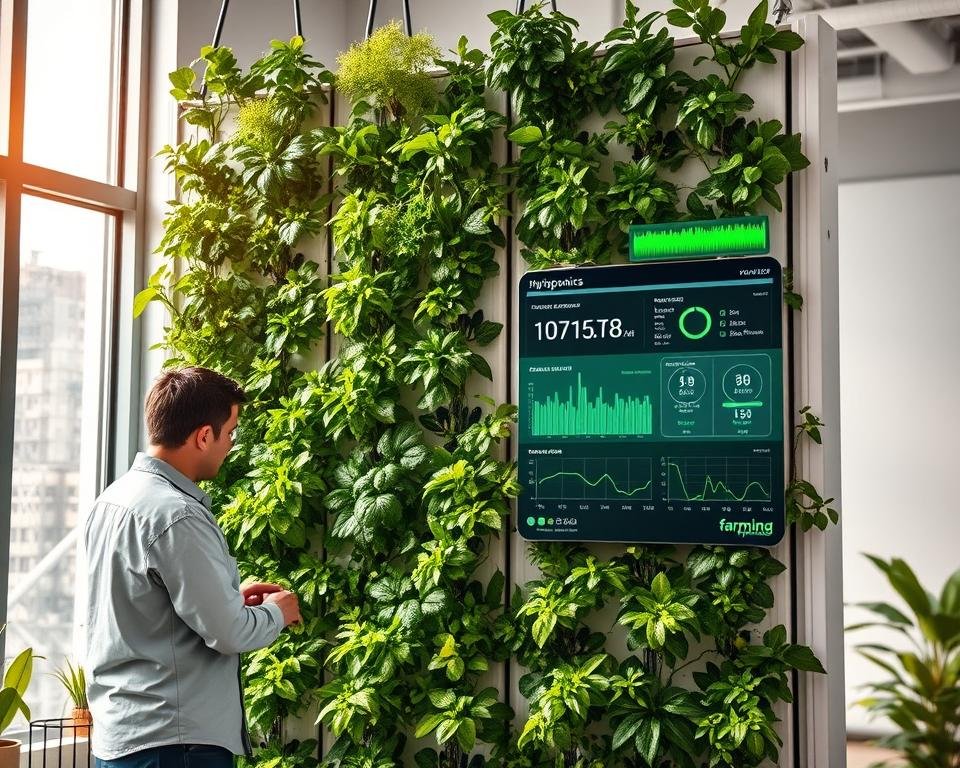
To keep your vertical garden healthy, you need to monitor its condition and maintain it well. A good care plan can stop problems before they start.
Preventive care has several important steps:
- Regular visual plant inspections
- Soil health tracking
- Early detection of potential problems
- Systematic maintenance scheduling
When checking your garden, look for small changes in plant health. Watch for signs like leaf discoloration, unusual growth, or pests. Catching these early can help solve problems fast.
Key maintenance tips include:
- Set up regular monitoring routines
- Use digital tools for tracking
- Try predictive maintenance
- Make care plans flexible
Being proactive with your garden can save money in the long run. Regular checks and care can make your garden strong and lively.
Consistent care is the secret to a healthy and vibrant vertical garden.
Conclusion
Maintaining a vertical garden needs dedication and smart planning. By sticking to a regular maintenance schedule, you can make your garden thrive. It’s all about proactive care and keeping an eye on things.
Good maintenance isn’t just about doing the same things over and over. It’s a detailed plan to keep your garden healthy and looking great. Studies show that planning well can make plants healthier and avoid problems early on. Just like how maintenance teams keep things running smoothly, you can do the same with your garden.
Putting in the effort to maintain your garden will really pay off. A well-cared-for vertical garden is not only beautiful but also supports plant growth. By knowing what your garden needs and sticking to a routine, you’ll grow closer to it. And you’ll see the fruits of your labor.
Start your vertical gardening journey with confidence. Your careful planning will turn your garden into a stunning piece of art. Begin now, and watch your garden grow beautifully with care and passion.

